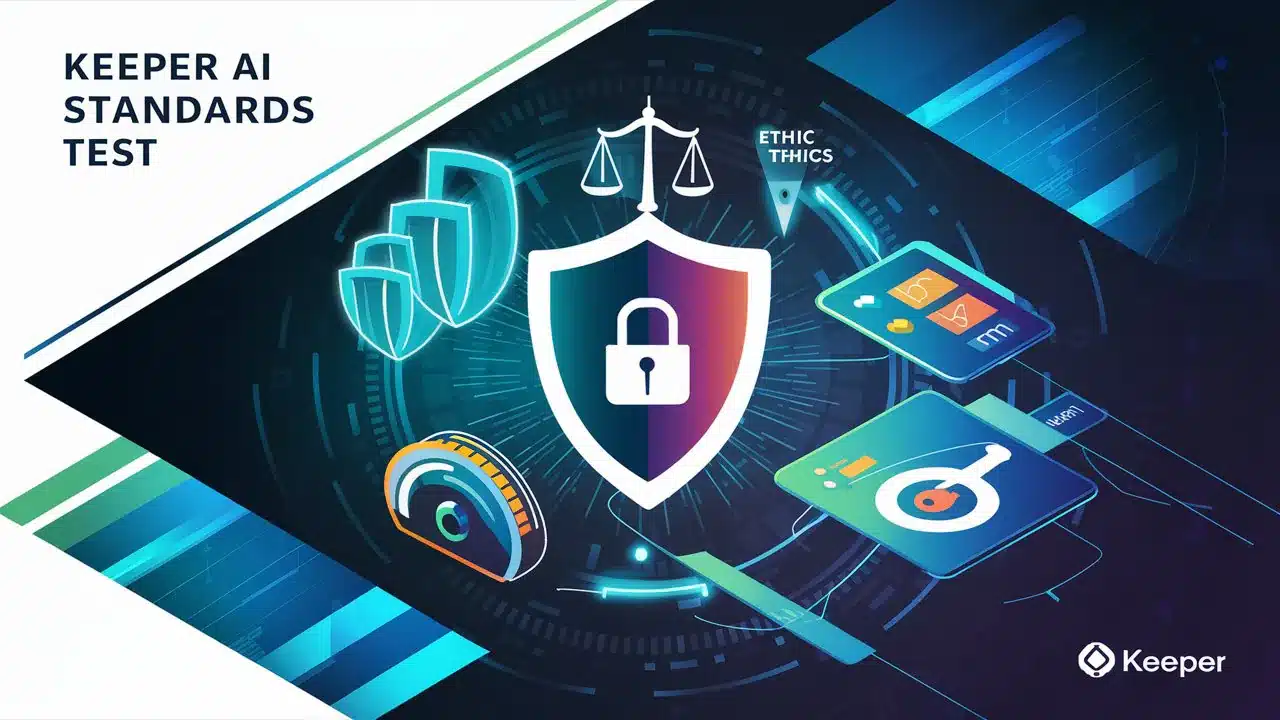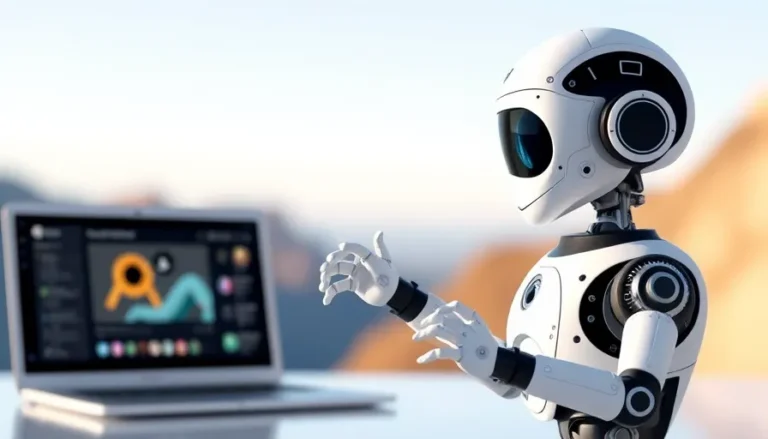the importance of keeper ai in maintaining high standards in testing
Introduction
In today’s fast-paced digital world, maintaining high standards in software testing is more critical than ever. Companies need to ensure that their products not only meet expectations but exceed them. This is where Keeper AI steps in as a game-changer. With AI-powered solutions, Keeper AI revolutionizes how testing is conducted making it smarter, faster, and more efficient. By leveraging advanced technology, Keeper AI enhances quality assurance processes, ensuring that software achieves the highest possible standards.
The Role of Keeper AI in Software Testing
 Image courtesy: Unsplash
Image courtesy: Unsplash
In an age where software is becoming increasingly complex, maintaining high standards in testing is more critical than ever before. Keeper AI is making impactful strides in this area by transforming how software testing is executed, ensuring a seamless experience for both developers and users. Let’s dive into the dynamic role Keeper AI plays in software testing.
Automating Repetitive Testing Tasks
One of the standout features of Keeper AI is its ability to automate repetitive testing tasks. Imagine running the same test over and over again for different software versions—sounds tedious, right? With Keeper AI, those redundant and time-consuming activities are handled effortlessly. It can perform repetitive testing tasks constantly, freeing up human testers to focus on more critical and creative problem-solving tasks. This automation not only speeds up the testing process but also saves companies time and money.
Enhancing Test Coverage and Depth
Keeper AI also shines when it comes to enhancing test coverage and depth. During the software development process, it’s essential to ensure that the application is thoroughly tested. But with so many potential scenarios, doing so manually is nearly impossible. Here’s where Keeper AI steps in—it can simulate a wide range of conditions and user interactions, ensuring that more of the application’s paths are tested. This heightened coverage means fewer bugs make it to production, enhancing the quality and reliability of the software.
Reducing Human Error in Test Execution
Even the best teams can have an off day—humans are, after all, prone to error. It’s easy to miss important details or make simple slip-ups during manual testing. With Keeper AI, these errors can be significantly reduced. The AI-driven tool executes tests precisely as programmed, without fatigue, reducing the likelihood of human oversights. This meticulous execution boosts confidence in the reliability of testing outcomes.
How Keeper AI Improves Quality Assurance
Quality Assurance (QA) is the backbone of delivering flawless software, and Keeper AI is here to strengthen that backbone. Keeper AI’s offerings in QA ensure that the end product is not only functional but also delightful to use.
Real-time Data Analysis and Reporting
Keeper AI excels in delivering real-time data analysis and reporting, an essential component of modern QA processes. In a world where quick decision-making can determine a company’s success, having access to immediate insights is crucial. Keeper AI constantly analyzes test data, presenting it in digestible reports that help teams make informed decisions quickly. With these insights, teams can foresee potential issues before they escalate, allowing for quick and efficient adjustments.
Identifying Critical Bugs Early
There’s nothing worse than discovering a game-breaking bug right before or after a product launch. Keeper AI’s keen eye for detail means critical bugs are identified well before they reach production. It assesses numerous variables and scenarios to detect bugs that could disrupt the user experience. By catching these critical bugs early, companies can address them proactively, reducing the risk of costly reworks or, worse, damaging their reputation.
Supporting Continuous Integration and Delivery
Keeper AI is also a key player when it comes to supporting continuous integration (CI) and continuous delivery (CD)—two important practices in today’s fast-paced software development world. With Keeper AI’s automation, testing can be seamlessly integrated into the CI/CD pipeline. This ensures that new code changes do not disrupt existing functionalities and that each iteration is tested and validated quickly. Consequently, companies can roll out updates more frequently and reliably, satisfying user expectations with high-quality software consistently.
In conclusion, Keeper AI is not only elevating testing standards but also reshaping the landscape of software quality assurance. By automating repetitive tasks, enhancing test coverage, reducing errors, analyzing data in real-time, identifying bugs early, and supporting CI/CD, it helps developers and testers deliver outstanding products to end-users, keeping everyone happy and the technology world thriving.
Benefits of Using AI in Testing Standards
Increased Efficiency and Productivity
In today’s fast-paced tech world, efficiency is the name of the game! AI in testing, especially tools like Keeper AI, can boost efficiency to new heights. Let’s wave goodbye to the days of tedious, manual testing and say hello to quick, automated magic. With AI, software development teams can automate repetitive tasks, freeing up human testers to focus on more complex issues that require a critical eye. This doesn’t just speed things up; it heightens productivity. AI can rapidly run checks, identify issues, and even predict potential failures, ensuring that your software is both safe and top-notch without slogging through stacks of code yourself.
Cost-Effective Testing Solutions
It’s no secret that testing can eat up a chunk of your budget. However, integrating AI into the testing process can significantly slash these costs while still achieving impeccable quality. Keeper AI can do repetitive tasks day-in and day-out, reducing the need for large testing teams. This means you spend less on human resources while still maintaining (or even elevating) the quality of your outcomes. Plus, because AI can catch issues early in the development process, it staves off costly redo’s later on.
Scalability and Flexibility
Another standout advantage of Keeper AI in your testing toolbox is its ability to scale up or down based on your project’s needs. Whether you’re working on a small app or a large-scale software platform, AI accommodates fluctuations effortlessly. The flexibility of AI tools lets you adjust your testing needs without hitting a hard stop. With Keeper AI, the same tool that handles your startup’s app test can also take on the massive online market’s demands without missing a beat. Its cloud-based nature, coupled with robust infrastructure, ensures that testing processes adapt swiftly, making it a match for diverse projects and requirements.
Real-World Examples of Keeper AI Implementation
Case Study: Success in Agile Environments
Meet Tech Innovations Inc., a mid-sized software company with their toes dipped in the agile waters. In an environment where fast iterations and rapid deployments are regular demands, they turned to Keeper AI to keep up with the pace. Before AI, releasing a new app update meant rounds of manual tests, often resulting in inefficiencies and sluggish timelines.
But once Keeper AI was implemented, the team noticed a drastic shift in their workflow. Keeper AI automated the repetitive aspects of their testing, allowing developers and testers to focus more on refining features and enhancing user experience. This synergy led to faster delivery cycles and products that hit higher quality marks. As a result, Tech Innovations’ client satisfaction soared, showcasing how Keeper AI can drive success in dynamic and agile settings.
Case Study: Integration with Legacy Systems
Across town, Legacy Systems Solutions faced a different challenge. They wanted to integrate AI testing tools with their older systems, a task that seemed daunting at first. Enter Keeper AI. With a reputation for compatibility and adaptability, Keeper AI seamlessly integrated into their existing infrastructure without causing disruptions.
Legacy Systems Solutions utilized Keeper AI to modernize their testing approach, bridging old with new. The AI tool’s flexibility allowed for custom configurations that worked harmoniously with their legacy systems. Not only did this revamp improve their testing accuracy, but it also breathed new life into their aging software. Bugs that were once overlooked were caught timely—before rolling out any updates. This integration didn’t just maintain their high standards; it uplifted them to new levels while ensuring that they didn’t have to bid farewell to their trusted foundational systems.
In both of these real-world scenarios, Keeper AI proves its worth as a robust tool, integrating seamlessly and adapting to bespoke needs, all while highlighting its crucial role in maintaining high testing standards.
Future Prospects of Keeper AI in the Testing Landscape
 Image courtesy: Unsplash
Image courtesy: Unsplash
As technology keeps evolving, so do the tools we use to ensure our software meets top-notch quality standards. Keeper AI is one such innovation, and its future in the testing landscape looks incredibly promising. Now, let’s delve into what lies ahead for this game-changing tool.
Firstly, the role of Keeper AI in testing environments is expected to expand. With its ability to learn and adapt from each testing process, it will likely become even more capable of predicting and identifying potential glitches before they arise. This proactive approach not only saves time but also enhances the robustness of the software being tested.
Secondly, as more data becomes available, Keeper AI will continue to refine its algorithms, leading to more accurate testing outcomes. Imagine AI that learns from past errors of different projects and applies that knowledge instantly to new testing environments. It’s like giving each project the wisdom of countless tests that came before it!
Moreover, the integration of Keeper AI with other agile tools and platforms will streamline workflows. Teams will be able to automate test scenarios more effectively, allowing them to focus on creative solutions and complex problem-solving rather than repetitive test setups.
Additionally, here are some exciting prospects on the horizon:
– Increased automation: As AI technology develops, Keeper AI will likely handle more tasks, reducing the need for manual intervention.
– Cost efficiency: Automated testing with Keeper AI can significantly cut down costs associated with manual processes.
– Customized testing solutions: The ability to tailor AI-based testing to match specific project needs means a more personalized approach to quality assurance.
In essence, the future of Keeper AI in software testing looks bright. With continued advancements, Keeper AI is set to not only maintain high testing standards but also to redefine the landscape of software quality assurance. The journey is just beginning, and the possibilities are endless!
Conclusion
In a world that’s constantly driven by technological advancement, maintaining high standards in software testing is more critical than ever. Keeper AI plays an integral role in upholding these standards by ensuring precision, reliability, and efficiency in quality assurance. With its intelligent algorithms, it helps testers catch discrepancies that might otherwise go unnoticed.
By implementing Keeper AI, teams can expect:
– Enhanced accuracy in testing processes
– Reduction in human errors
– Fast and automated detection of defects
Embracing such cutting-edge technology not only aids in improving software quality but also boosts user satisfaction and trust. As we continue to innovate, leveraging AI in testing is not just a luxury—it’s becoming a necessity.







